

Talk About the Passion
source link: https://nautil.us/talk-about-the-passion-359400/
Go to the source link to view the article. You can view the picture content, updated content and better typesetting reading experience. If the link is broken, please click the button below to view the snapshot at that time.

Talk About the Passion
Scientists on the art that has inspired them. Artists on the science that has inspired them.

Two cultures? That’s old news. At Nautilus, we’ve interviewed scientists and artists who don’t see a rift between their fields; on the contrary, they take inspiration from one another. This intersection has caused us to think that today’s scientists and artists are players in a new cultural Renaissance, or at least a throwback to the old one, when scientists were artists and artists were scientists.
Florentine sculptor, painter, and printmaker Antonio Pollaiuolo, for example, was the first of many Renaissance masters to dissect human bodies to better understand and represent the naked human form. Science was a great inspiration to their art—in a rather macabre way. But both art and science benefited from their forensics. And didn’t Einstein, not a bad violinist himself, say he felt that Mozart’s music “has always existed as part of the inner beauty of the universe waiting to be revealed”?
I decided to put the inspiration question directly to five scientists and five artists. I asked the scientists what work of art inspired them, and the artists what in science inspired them. Their answers, in their own words, are personal, idiosyncratic, and driven by deep curiosity, just like science and art themselves.

If I’m really honest, and being unpretentious, the creative force that has most influenced me as a scientist is science fiction. As a very young kid, I watched a fair amount of Star Trek on TV, which was very influential because it triggered the idea that there could be things beyond normal perception, beyond my everyday experience of the world. Star Trek tells an immersive story about living, thinking beings faced with endless puzzles. Of course, there’s always a neat packaged solution at the end of the 45 minutes. Quite often, the resolution in Star Trek comes through an interesting combination of abstract logic and human personality—of different individual ways of seeing. You would have a team of people working together through thick and thin, and that could be exciting, it could be adventurous, and in the end, you could sort of make progress. There was a certain appeal to that when I was a young person with a lot of questions, beginning to realize that science was a direction I was interested in pursuing.
One of the things Star Trek did so well was that there was actual science behind its imaginings. There’s a famous episode with a creature that’s silicon-based instead of carbon-based. It looks like some hideous carpet from the 1970s. In the show, it takes the characters quite a time to recognize that this is a living, thinking thing because it is so alien. It got across this sense of, stuff doesn’t necessarily have to be built exactly like us, not just in terms of how it looks, but its fundamentals. It was an actual scientific question at the time: Could you build life differently? Now we know that silicon-based life is somewhat unlikely, but the question of whether alternate forms of life could exist remains.
I love the idea of the artist as antibody, neutralizing the toxins in our culture.
Science fiction helped me to grasp how extraordinary the cosmos really is, and to wonder at the connection between all of that and the very parochial experience of being an organism on the Earth. I wanted to know how those things link together. I wanted to know: Are we alone? Were those funky aliens that I was seeing on Star Trek out there somewhere? So my trajectory began with physics and cosmology, but over time sort of veered toward astrobiology, which is the quest to understand the nature of life in the universe, to understand what is out there that might support and initiate life. This may entail going off in a spaceship to explore, or exploring other worlds through our telescopes even though we can’t physically be there ourselves.
The first time I watched Star Trek, I must have been around 4 years old, and I remember there was something scary happening, because I was hiding behind the couch, but peeking over the edge of the couch at the same time. My parents, who were both academic art historians—my father in photography and my mother in Renaissance art—would watch Star Trek with me. So I was a little bit afraid, but in a good way. As a kid, there’s a natural wonder, a natural desire to ask questions, but as we age, we get so used to the world around us that we tend to lose some of that awe and sense of novelty. Science fiction instilled an interest for me in the biggest questions—the questions of what tantalizing and terrifying mysteries lurk beyond the confines of the surface of the Earth.

My most recent book is Soil: The History of a Black Mother’s Garden. In it, I take a really intimate look at soil, a word that has both cultural and scientific weight and that is composed of opposites. It denotes a rich and fertile home for growing things, but also a sense of dirtiness and degradation. When you look at scientific studies of soil, you notice that how “dirty” it is can actually have a huge impact on the well-being of those who work with it: Healthy soil contains microbes like Mycobacterium vaccae that seem to promote serotonin uptake and general happiness in humans. But when you apply noxious chemical pesticides and herbicides to that soil, it can have the opposite effect, raising the risk of psychiatric disorders for those who dig their hands in it.
These details brought an extra dimension to the story I wanted to tell about the joys of gardening in the 21st century, a context that includes climate change, rampant pollution of the environment, and a long history of reliance on people of color to do agricultural work. When is a plot of land fertile and when is it so degraded, either by chemicals or events, that it spoils life instead of nurturing it? The soil in my garden here in Colorado has its own complicated history. It’s a beautiful place I love, where I’m rooted and grow things, but it is also a place that used to belong to others, to indigenous peoples who were run off their land, so this soil is rich with paradox.
I’m especially fascinated by the times when science reconnects us to other more ancient ways of knowing. This happens over and over again. We do these complex studies that show you perform better when you sleep well at night, that opening a window helps to improve air quality in a room … or that growing things in healthy soil can be a balm for the mind. Science often provides new language for something that for centuries people intuited and understood. I find that wonderful and kind of funny.
I was raised by a physician who’s a very scientific thinker, and I studied pre-med along with English in college, so data and research were always part of my lexicon. I ended up being a writer and not a professional scientist in part because I’m pretty ecumenical in my interest. But the idea that science and art are somehow diametrically opposed is a relatively new concept in human culture. Scientists and writers often start out with the same profound questions about the nature of existence. The physics of stars, the neurobiology of dirt, ice core drilling in Antarctica—all these fields of inquiry help me answer big questions about who we are as a species and where we live, down to the very soil beneath our feet.
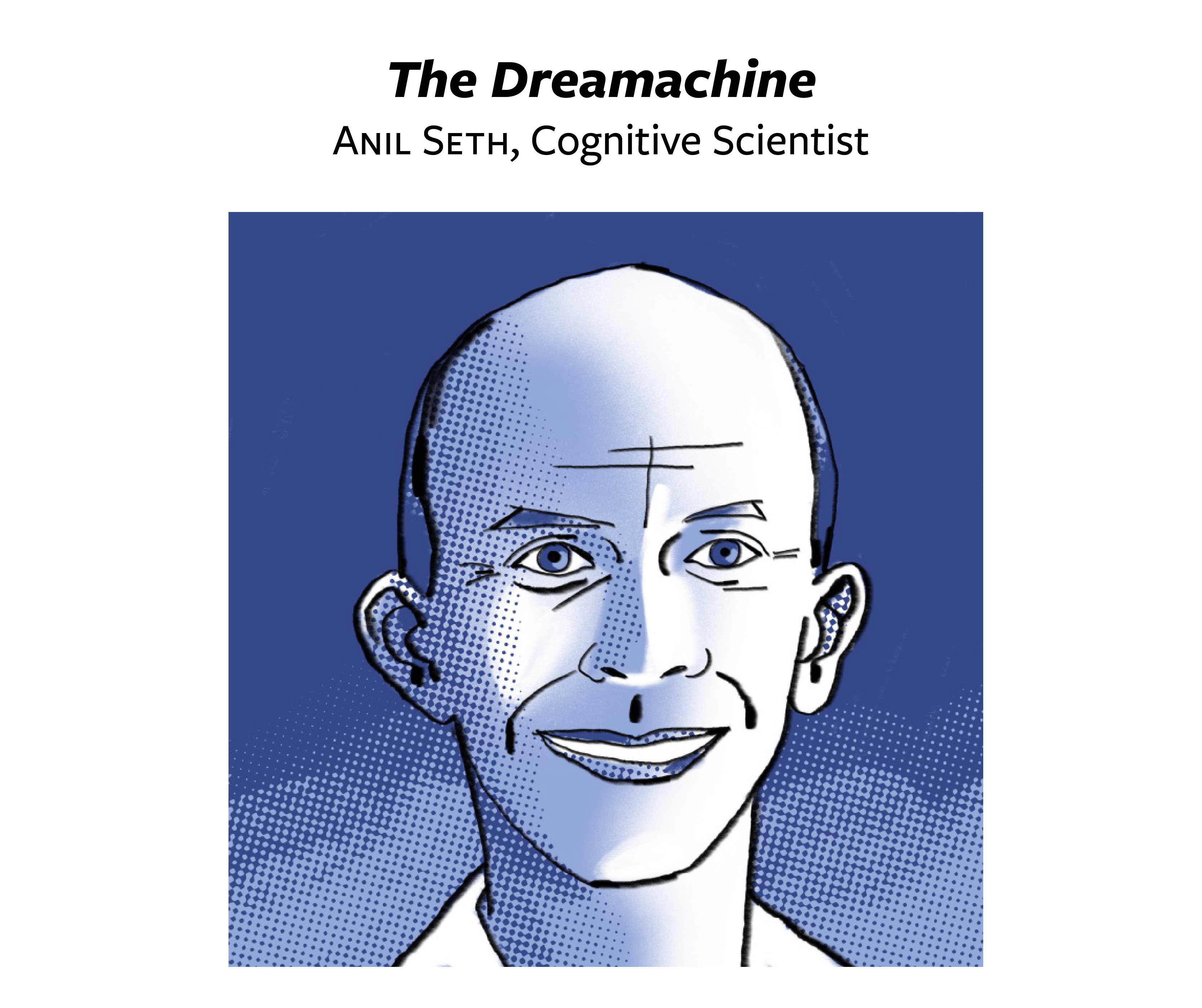
Sometime in the late 1950s, a British beat generation painter named Brion Gysin was on a bus in the south of France. He was falling asleep, and the sun was setting, and the bus passed through a stand of trees. And suddenly this bright, flickering, almost stroboscopic light flooded the bus. Gysin’s eyes were closed, and he started having these remarkable visual experiences of colors and shapes and geometries and movement. The visions ceased as soon as the bus left the trees. Gysin was fascinated by this experience and wanted to find a way of recreating it.
Soon after that Gysin teamed up with William Grey Walter, a pioneering British polymath, who had been exploring a similar phenomenon: how stroboscopic light on closed eyes can generate these extraordinary visual experiences. So Gysin and Walter and a mathematician named Ian Sommerville in Cambridge got together and built something they called the Dreamachine. It was charmingly lo-fi. It was just a cardboard tube with some slits cut in it and a bright light in the tube. You put this tube on a spinning record player turntable and then you would get a stroboscopic effect. People would sit in front of the Dreamachine and they would have phenomenal visions. Gysin wanted to mass produce it, to make it more popular than television. It didn’t take off, but it had countercultural appeal. The Rolling Stones apparently enjoyed using it and there was a version in the Centre Pompidou in Paris. As Gysin said, in the Dreamachine, everyone is an artist. You create the work of art. It’s in your head and your head only. But we still don’t know entirely how and why it works.
I had a beautiful speckled kingsnake that was shiny, like patent leather.
I didn’t know about Gysin’s Dreamachine until a few years ago, when I was recruited to be part of a team of neuroscientists, philosophers, musicians, and architects who wanted to realize Gysin’s vision for the 21st century. We also wanted to make it a collective experience, with the music and architecture as central as the light, and to use the Dreamachine to ignite curiosity and wonder about the mind and the brain. In my lab, we had already been working on this phenomenon of stroboscopic-induced visual hallucination for about 10 years, because it offers a fantastic window onto visual consciousness. In 2021, our team got a grant from the United Kingdom government and together we built Dreamachines in four cities in the United Kingdom, where 20 or 30 people at a time could take an immersive journey through stroboscopic light and sound. When participants emerged from the core experience, they would enter a reflection area where they could talk about what they’d experienced, use an interactive tool to recreate aspects of what they had seen, and even draw pictures. We also offered information about how perception works in the brain, and about how we think the Dreamachine works.
Altogether, over five months between May and September, around 40,000 people visited our Dreamachines. Most people reported having remarkable and intense visions, with some of them reporting complex hallucinations including people, places, and narratives. Many people dealing with depression and grief came out of the Dreamachine saying they felt a lot better. Now, as well as planning a touring version, we’re taking this project back into the lab and using EEG to look at people’s brains when they are having these visual experiences. We’re also trying to develop interfaces so people can communicate what they perceive more accurately. And we’d like to explore the possibility that the Dreamachine could act as a non-pharmacological treatment for mental health conditions.
I’ve been involved in a bunch of art-science collaborations over the years, but this was different. It felt like a true marriage of science and art. I’m not particularly enamored by the tradition of putting people into brain scanners and having them look at a Picasso, the kind of neuro aesthetics that implicitly places science above art. I’m more interested in looking at art and science together as different approaches to understand human experience and the human condition. The French painter Paul Gauguin said “I close my eyes in order to see” and it sounds very metaphorical. But here we brought his idea to life in a very literal sense.
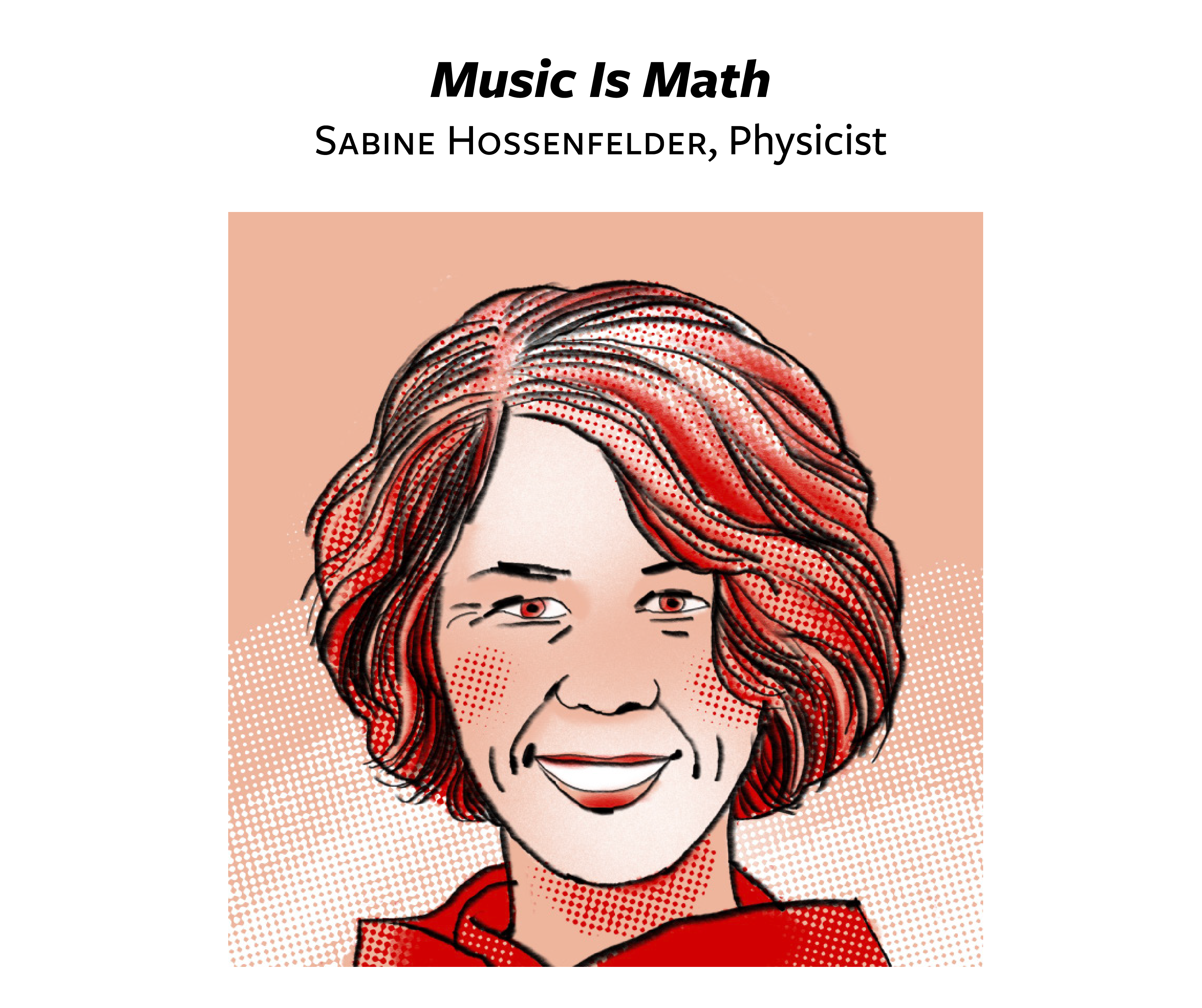
I use music to clear my head. If I’m trying to solve a problem and I feel super stuck, then concentrating on the music does a very good job. Often, I feel like it unlocks something in me. It’s not so much that I use the patterns or concepts that come up in the music itself. It’s more an indirect way of shaking up some things in my head that didn’t quite work as I wanted them to.
For instance, three years ago, I was trying to solve a problem in quantum mechanics. I was sure there was an answer, but I couldn’t find it. It was a math problem and I’d written down all the requirements and I was like, “there’s gotta be a way to do it.” So I took a few days off and was working on a song at the time, a cover version of “Things Can Only Get Better,” by D:Ream. I had to shift the whole thing into a higher key to get it into my vocal range, and that changed the feel of the song. So then I started rearranging some other parts, and while I was at it, there were a few phrases in the song that didn’t really make sense to me, so I replaced them with something else, and I changed the interlude, and the instruments, because I don’t actually play an electric guitar. I use synthesizers. It all comes out of the computer and then I sing. And so the song morphed quite a bit.
I was working on this song for some while and then I just had this very visual understanding of the solution to the math problem I had been working on. It was like my brain suddenly decided “this is how it has to work.” Similar things have happened to me on other occasions. I get this feeling that there has to be an answer, and I can kind of see in the equations that there is an answer, but I don’t know what it is. Often that means my brain has solved the problem, but it doesn’t want to spit it out, so I have to do something else to bring it into my consciousness, like play or write music.
Music is very mathematical, and the way that I think about mathematics is that it’s basically an art form with very strict rules. If you’re writing a song, you have to learn the techniques, the parameters, but you can break these once you’ve learned them. In mathematics, it’s much more rigid. It’s basically all about the rules. So if you’re doing music, your brain tries more new things. And those new things may lead you through the back doors and side doors that open up to the solution you were seeking. That’s why music can be such a muse for me when I’m stuck on a math puzzle.

My hero is Alexander von Humboldt. A German scientist, artist, and explorer who loved the natural world, he was also the first to understand that ecology is interconnected. His illustrated map of Chimborazo, a glacier-clad volcano that is Ecuador’s highest peak, was transformational for me. It’s not only beautiful to look at but includes careful annotations of the names of plants and animals living at different elevations, an effort to depict a concept that came to him when he climbed the peak: that climate is an organizing principle of life. The illustrated map shows how art and science can enhance one another, engaging the mind and the senses.
Some of my own work takes a similar approach: In a series called “Naturalists of the Long Now,” I collaborate with paleoclimatologists, who annotate my photographs of disappearing glaciers to bring a narrative of deep time to the surface. This represents an evolution in my thinking. Over a decade ago, in 2012, I joined a couple of friends in Glacier National Park, hiking into the backcountry over two summers to document the changing landscape. I quickly noticed that photography runs up against limitations when it engages with the idea of climate change. There is the melting glacier, which is what I photograph, or there is the polar bear on the ice floe. There is always an implied narrative, but the narrative is never complete, which is both a strength and a weakness.
As a photographer, I never tire of the beauty of mountain landscapes, but I wanted to bring another layer of understanding and interpretation to my work. I also realized that I didn’t know much about the science of glaciers or what scientists working in these landscapes were studying. When I read some scientific papers, they seemed esoteric and impenetrable, out of reach for the non-scientist. With von Humboldt in mind, I was also interested in the scientists themselves as creative people. I wanted to help them reach a different audience.
There was something scary happening because I was hiding behind the couch.
These ways of thinking converged in my first art-science collaborations in 2015, when I traveled to the Quelccaya Ice Cap in Peru, one of the world’s largest tropical glaciers. I accompanied a team of scientists who were collecting ice cores and climate data to understand what the atmosphere of past eras on Earth can tell us about today. That group included climate and glacier scientist Douglas Hardy and geologist Carsten Braun. Later, when I returned, I asked them to write whatever they wanted directly on the photographic prints, to address the relationship between the landscape, climate change, and their research. On one of these images, for instance, Braun diagrammed and described rock formations called roche moutonnées. These rocks, carved by annual cycles of glacial freezing and melting, have only become visible over the past decade, due to more wide-scale glacial melt.
My collaborations with scientists aim to communicate what the past can tell us about the present and future, about the interconnectedness of living things over vast timescales. In another life I would’ve been a scientist, perhaps an ornithologist. But during the Victorian era, scientists were also artists, like von Humboldt. They were naturalists. They painted. They wrote poetry. With my current work, I want to help keep this tradition alive.
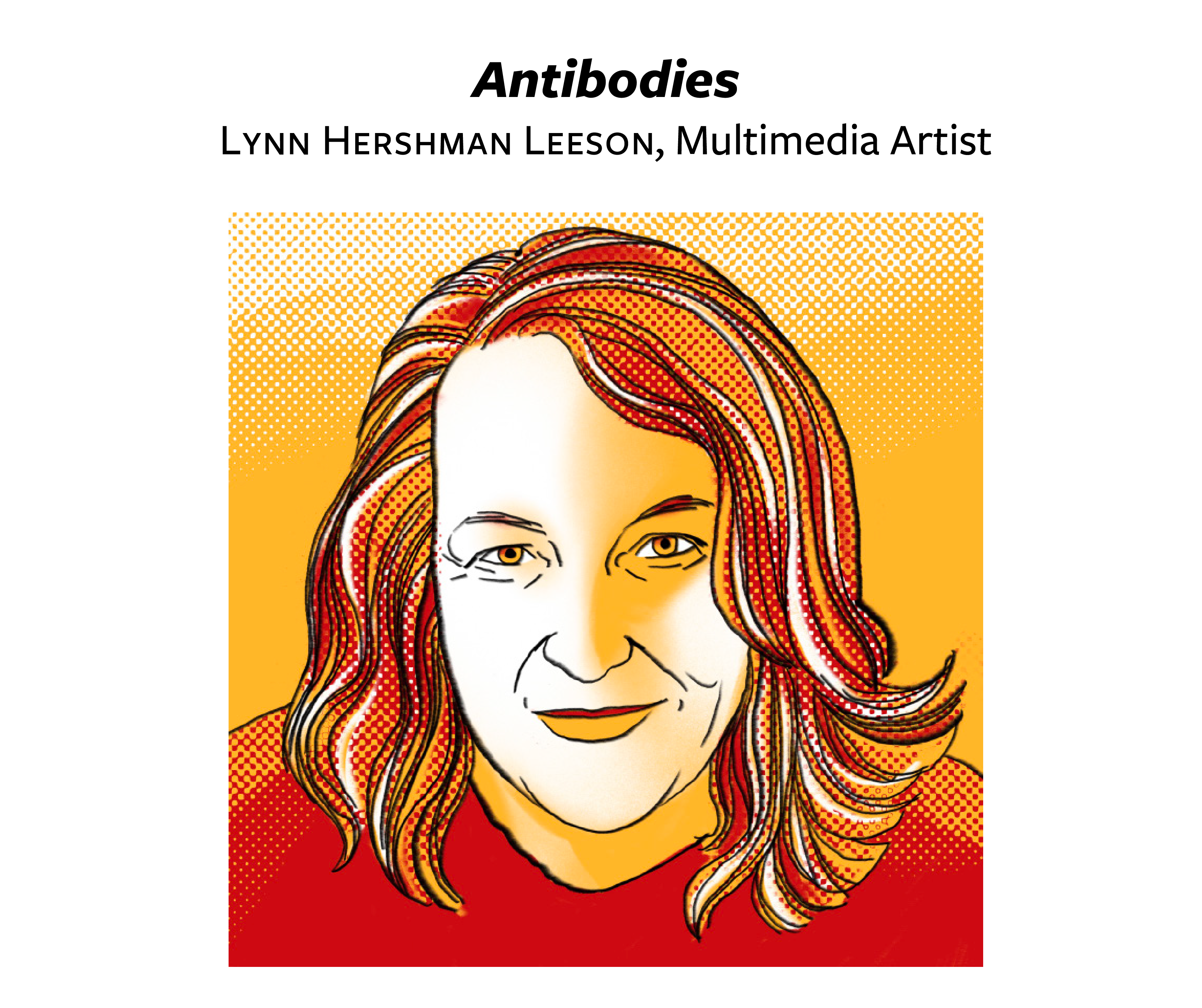
Some of my work has solved real scientific problems. For instance, for a 2018 show at Basel’s House of Electronic Arts, I wanted to work with a scientist who specialized in antibodies. I had already made works that I had described as “antibodies”—you know, not real bodies, but fictional ones, such as a character I created called Roberta Breitmore—but I had never worked with actual antibodies. So I met with Thomas Huber, a scientist who was with Novartis at the time, and we began talking about designing biological antibodies. We ultimately created two that were presented in vials in the show: One was for me and one was for Roberta. The binding regions of these antibodies spelled out our names in amino acid sequences.
It turned out that my antibody was completely useless because it would bind with everything, but Roberta’s would not bind with anything, and that was something Novartis had been trying to do for years. They were able to use it in their research. They said they “hit the jackpot” with my project, and it was completely accidental. I love the idea of the artist as antibody, neutralizing the toxins in our culture and planet, while the Novartis antibody acts on actual toxins in the body.
I’m currently working on my fourth project with Thomas Huber. We did one with Harvard that resulted in the creation of a system that removes plastic pollutants from water, and we are now working on one about immortality. Some bacteria and species of jellyfish are immortal, and I am trying to figure out how they sustain immortality. But it will be some time before I have a body of work to present.
What I do when I am starting a new project is to think about the most important things in the world. You know, what issues are we dealing with? I did that around 2006 and realized that mapping the genome was probably the most important thing that was going on. It gave us the potential to actually change life and understand what makes up each species. I began reading scientific papers and meeting scientists. You know, people would say, “Oh, don’t get insulted if they walk out in a minute.” But I really understood what they were saying, so they continued to talk to me. Seven years later, in 2013, that genetics work led to an exhibition called “The Infinity Engine,” which was all about genetic engineering and bioprinting. It was basically a model of a genetics lab with modular rooms that could be installed as a traveling exhibit. One of these rooms used facial recognition software to capture images of the visitors, reveal their possible DNA origins, and add them to an evolving composite human archetype.
I think it is really exciting to look at the questions that science is asking and try to come up with solutions. Artists are not restricted by having learned a discipline, so we solve problems using different methods, and can make things visual in ways scientists do not consider. Some people say my work is ahead of its time, but I think I get my ideas from the present. I just pay attention.

Back when I was in high school, I came across a copy of a science magazine with a story in it called “The Social Amoeba,” about the slime mold Dictyostelium discoideum. It’s basically a bunch of amoebas. The individual amoeba is just a shapeless blob. But when food runs out, the amoebas all crawl together and make this slick little slug. It crawls quite a distance farther than an individual amoeba could ever go. Then it makes a tower out of itself, with a ball of spores at the top, resembling a water tower. The amoebas in the stalk sacrifice themselves so the ones at the top can survive and disperse. If a bug brushes by or a raindrop hits it, the spore tower breaks like a piñata. All the little spores turn back into individual amoebas and go crawling around.
I was fascinated. I had been given a microscope for my bar mitzvah and I loved looking at cells in drops of pond water through the microscope. I also had a darkroom, and I would take pictures of paramecia and amoebas through the microscope and print them in the basement. So I had looked at a lot of these single-celled creatures, and I just never imagined they could do something so amazing. The author of the magazine article I read was John Tyler Bonner of Princeton University. So when I started trying to find my way as a writer after college, I called Bonner up and I interviewed him. Then I wrote an essay that was published in Harvard Magazine called “Marching Along with the Social Amoeba.” As I like to say, I’ve been marching along with it ever since.
The social amoeba helped get me thinking about evolution, the field of science I fell in love with as a journalist and author. Life begins as single cells, and then at some point, hundreds of millions of years ago, some cells get together and go multicellular. The social amoeba illustrates this process: The individual cells had to figure out how to cooperate and make something larger than themselves. This also really appealed to me as a metaphor for life. It’s a beautiful image of what science is, and of every aspect of culture, including writing. We’re individuals, but together we form this social being that is beyond our imagining. That’s exciting. It spoke to me. Also, I just thought it was cool.
It was a fateful beginning, because I got to be friends with Bonner and we stayed friends for the rest of his long life. He introduced me to Peter and Rosemary Grant at Princeton, who were studying the evolution of finches in the Galapagos, which became the subject of my book The Beak of the Finch. Today, I’m working on a little afterword to a 30th anniversary edition of that book, and I’ll turn 70 at the end of this year. And so the science I find myself getting really interested in now concerns identity. I’m hoping to write a memoir that explores the big questions—how do we find ourselves, and how do we find our way? To me there is poetry in these questions, and that may be what inspires me the most: to try to express that sense of the poetry of life through the lens of science. The social amoeba, with its jaunty tower of hopeful spores, helped to set me on this course.
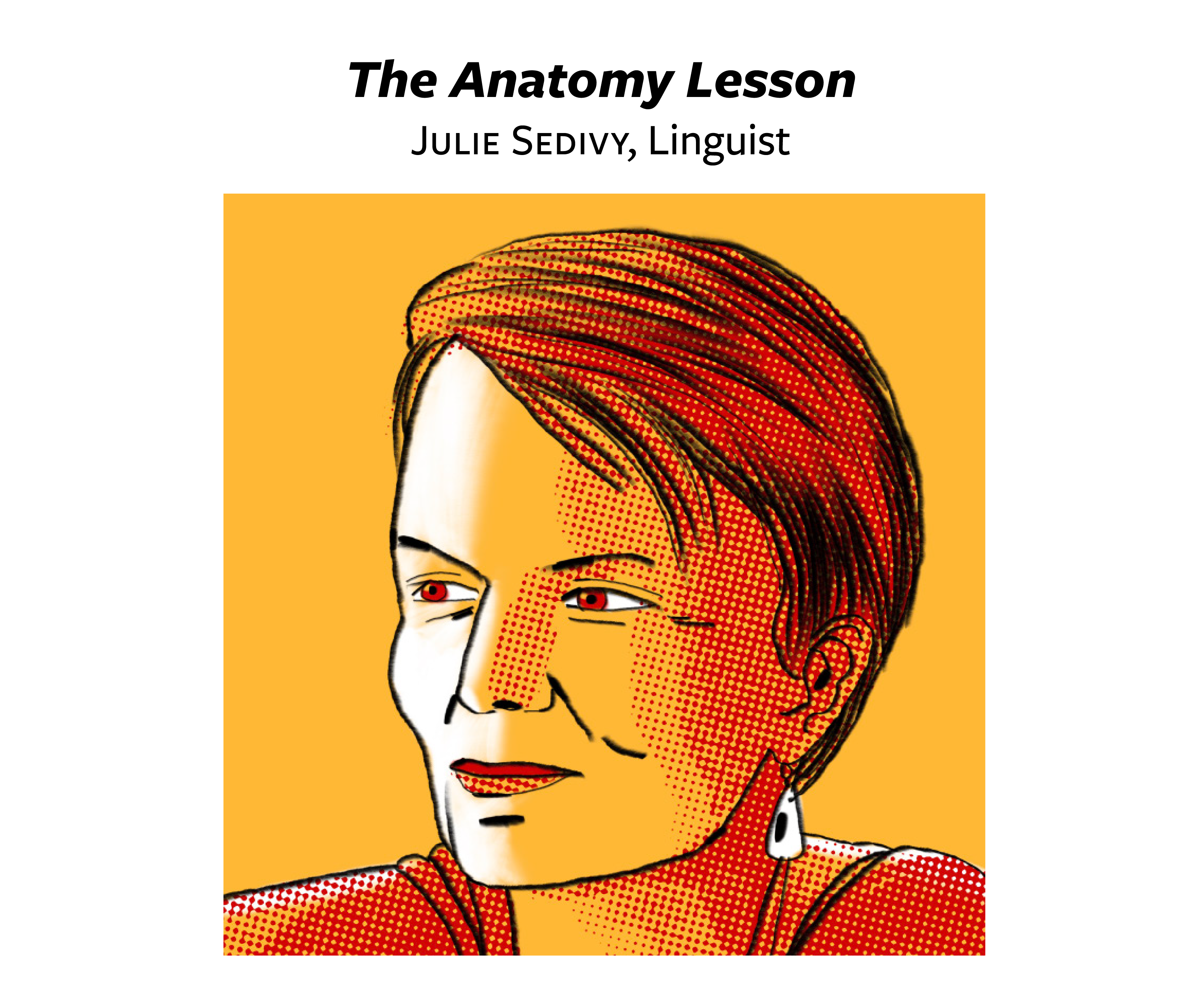
I began my university studies thinking I would be a novelist—I had always thought that I would be a writer. I had spent my entire life swimming in language, loving language, thinking myself something of an expert in language. English was the fifth language I learned, and I can’t remember a time before I loved books and literature and being read to. My father, in particular, read to us with a style that signaled engrossment and pleasure, so this became a model for me of how you orient to literature. I was not aware that one could study language scientifically, so my first linguistics class, in university, was a revelation. it was like somebody had peeled back the skin for me. I could see the ways language works that are not available to us unless we study them systematically, that language is full of intricate patterns about which we aren’t even consciously aware.
A few years later, I remember coming across this Rembrandt painting, and recognizing it, and thinking, “yes, that’s exactly what I felt in that classroom”—the painting was called The Anatomy Lesson, and it depicts a medical doctor teaching members of the public about the human body by dissecting a cadaver. This painting is from the early 1600s, presumably a time when few people knew what a body looked like from the inside. I imagine it might have been quite astonishing to discover, for example, that blood traveled in these special channels and didn’t just kind of seep out of your muscles like a sponge, or that there were dedicated organs with very specific functions that you could actually trace through the body, such as the digestive tract. I identified with the sense of awe I saw depicted there, that sense of leaning into the light, that sense of discovery of this everyday object that you are getting to know in a completely different context.
I was working on this song and had this very visual understanding of the math solution.
But once I began studying linguistics, I found the objects of study were often disembodied from the aspects of language that I had always assumed I’d be working with. Rather than using works of literature or poetry, we analyzed everyday sentences to understand this miracle of language. It required a very concerted effort to stay connected to that artful side of language that gives me pleasure. It’s been my life’s work to try to figure out how to join that aspect of knowing about language with the love of language as an aesthetic form, as a mode of storytelling, as a way of generating some kind of emotional effect. I’ve mostly resolved that tension for myself by writing about language from outside the academy, while staying connected to the research. I’ve always found it odd that, unlike many visual artists who study anatomy as a way to inform their art, writers rarely engage with scientific knowledge about language. My goal is to intertwine the two as much as I can.
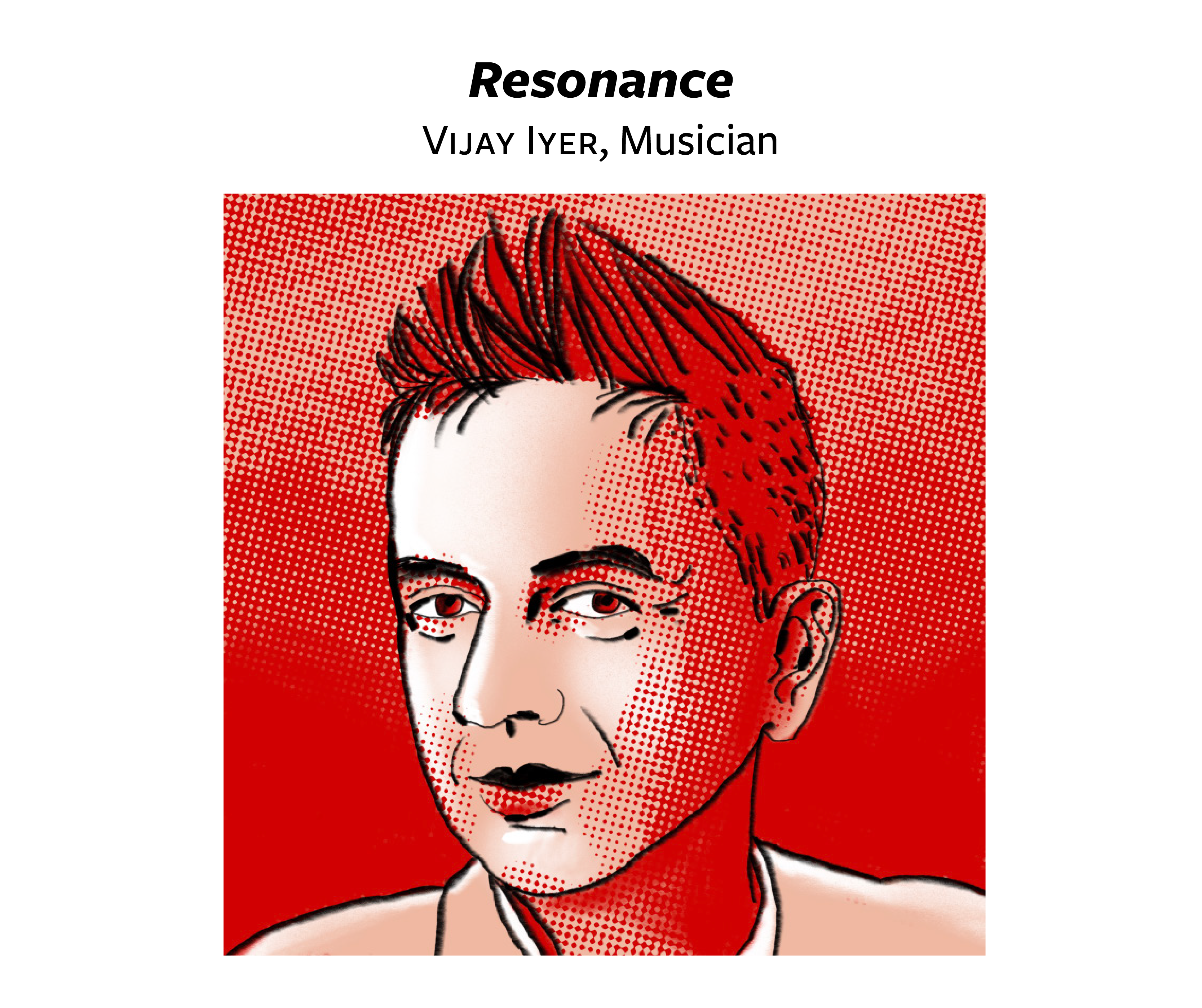
Last night in Brussels, I played in a cathedral. The ceilings might have been 60 feet high. It was a truly spectacular experience of not just playing an instrument, but being inside an instrument, being inside a resonating body. That room had certain frequencies that it liked more than others. You couldn’t ignore it. Our ensemble included piano, bass, and voice, and everything just bloomed into that space. Sounds remained in the air for seconds. You couldn’t just hit a note and let it disappear. It would remain in the air, and in your ear. The vocalist could build these collections of pitches by singing a single line of melody. It all melted into an aura of sound.
Whether I’m playing piano or composing, solo or for an ensemble, or mixing or mastering an album, I’m always thinking in terms of the scientific concept of resonance, one of the fundamental building blocks of sound. Resonance is a quality of sustained vibration, as sounds reflect off surfaces and interact with one another.
I’m fascinated by the fact that we can hear a group of people playing together and distinguish different sound sources, different instruments, even different voices, young or old, perhaps even their gender or body size. Historically, humans as a species listened to music in groups—not via technology or headphones—so in evolutionary terms, there is a process of relation, body to body, that happens when we listen. When we hear music, we are hearing music being made, which means we are hearing bodies in motion.
In fact, for the last 25 years, I have been arguing that so-called “music cognition” is better understood as an embodied phenomenon. Musical phrases are based on the human breath, and musical pulse is based on human pulse and on the rhythms of walking. Musical expression is also related to speech, which has its own temporal flow related to what our mouths and speech apparatus can do. We are very good at listening to one another. Musical groove is the best example: A musician communicates pulse through rhythm, and that rhythm gets into the listener’s body. That’s called entrainment. In this way we resonate with each other. It’s a kind of communion of inner experience. A profound form of empathy. Music is us.
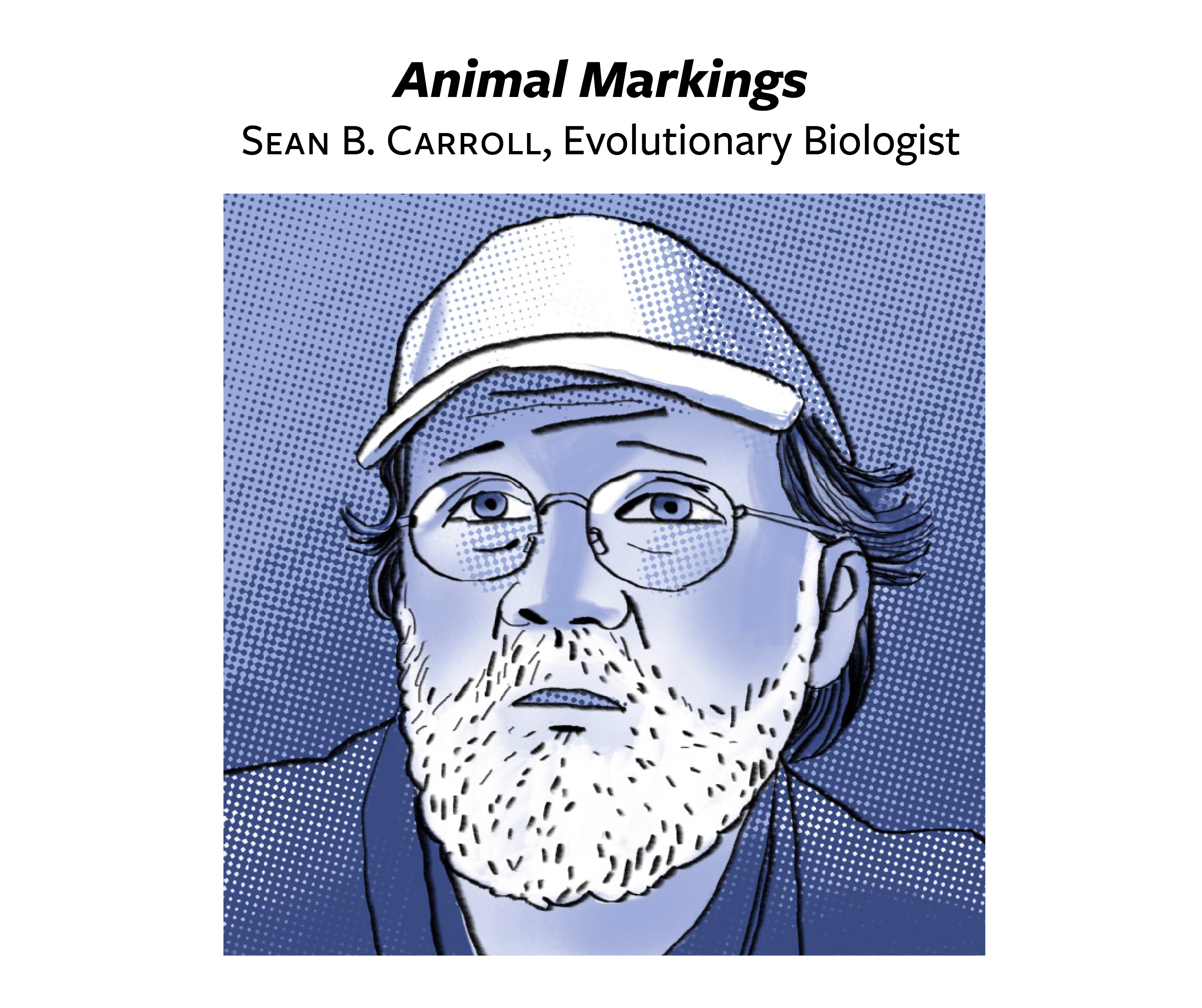
I’ve spent some time in the company of 20th-century French writer Albert Camus—about whom I wrote a book—and something he said has really stayed with me: “A man’s work is nothing but the slow trek to rediscover, through the detours of art, those two or three great and simple images in whose presence his heart first opened.”
For me, these indelible first impressions were the colors and patterns on animals I saw as a kid. Growing up, I lived in a fairly bland setting, wildlife-wise. This was urban Ohio. So the striped and spotted creatures I found when I went into the woods or, eventually, brought home as pets, captured my imagination. I had vivid green snakes. I had a beautiful speckled kingsnake that was shiny, like patent leather. It was spotted on top, with a yellow spot on every scale, and it had this beautiful zebra pattern on the belly, and on the face. It looked like it was smiling all the time. I had garter snakes that were all black with long yellow stripes. I had a spotted salamander. Whatever my 10-year-old aesthetic sense was, I just loved this body art. That was part of the pleasure of keeping these animals. To me, they were beautiful.
If I look back at the journey I took, I can see the aesthetic appeal of colors and patterns drove some of my scientific interests. When I got to embryology and first started looking at embryos through a microscope, I was awed by the process of things taking shape. There’s a whole branch of embryology just called pattern formation. You can see the molecular and chemical patterns of gene expression in embryos long before you see physical form emerge. These patterns have clear geometries and regularities. You can see them repeating. It’s spectacular. It’s like seeing the blueprint, a foreshadowing of what is to come, not just for the individual embryo but for the evolution of the entire animal kingdom.
Starting in the ’90s, I also did a lot of work on butterfly patterns, the molecular processes that contribute to their formation. People love butterflies because they are beautiful to look at, and there’s a lot of beauty at the surface, but there is also so much beauty under the hood, in the story of how butterflies come to look the way they do. So my pleasure has been to study things that fascinate me, that are pleasing to look at, and to get a glimpse of how nature does it. I have an emotional connection to the subject matter. Many scientists do. It’s not all analytical. It’s much easier to study things you love. ![]()
Kristen French is an associate editor at Nautilus.
Get the Nautilus newsletter
Cutting-edge science, unraveled by the very brightest living thinkers.
Newsletter Signup – In Page Mobile
Recommend
About Joyk
Aggregate valuable and interesting links.
Joyk means Joy of geeK